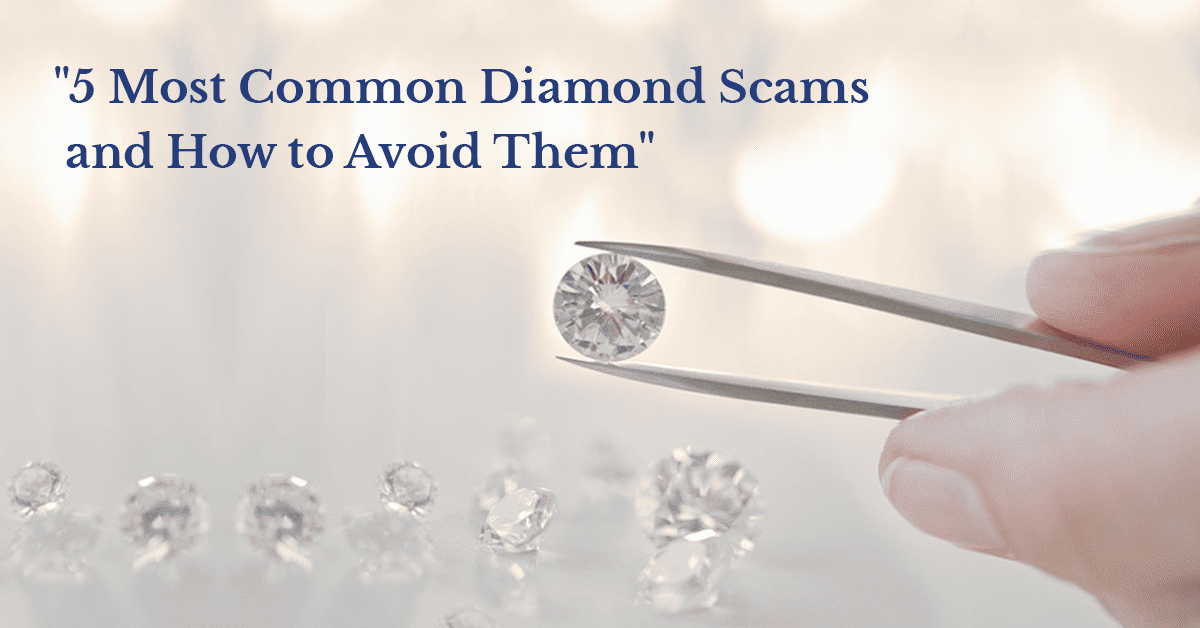Diamond scams are becoming more frequent these days. To avoid being ensnared in one of them, make sure to read all the pointers and techniques that we will reveal in this blog.
Diamonds are purchased to celebrate and cherish the significant events of one’s life, right? The purpose behind is quite simple: you want your loved ones to remember you, and your love every time they glance at that sterling ring on their hand or wear that classy necklace.
But, many times, some fraudsters attempt to destroy this experience by selling counterfeit diamonds, altering its certificate and so on. Since diamonds are expensive purchases, such scams put the buyers under a lot of financial and mental strain.
Should this demotivate you from purchasing diamonds? No, rather, as a buyer you must educate yourself about the most common diamond scams, and take precautions so as to ensure a satisfying buying experience.
For this, in today’s blog, we’ve listed the top 5 most common diamond scams and some tips and tricks to avoid them. Check them out without any further ado!
Key Takeaways
1. Choose Reputable Sellers: Switcheroo Scams
Avoid the Switcheroo Scam by purchasing from sellers with positive reviews and excellent customer service. Easy way to check is to do the fog test or the reflection method.
2. Authenticate Certificates:
Prevent altered diamond certificates by requesting grading reports from reputable labs and comparing them with standardized templates.
3. The Clarity Enhancement Scam
Guard against the Clarity Enhancement Scam by seeking written statements from jewelers about any enhancement and obtaining reports from reputable labs.
4. Carat Total Weight Scam:
Beware of the Carat Total Weight Scam; understand that the carat weight on price tags is for all diamonds, not just the center stone.
5. Verify Diamond Value:
Steer clear of deceptive pricing, always consult trusted gemologists or use trusted tools to verify diamond values before making a purchase.
1. Switcheroo Scam
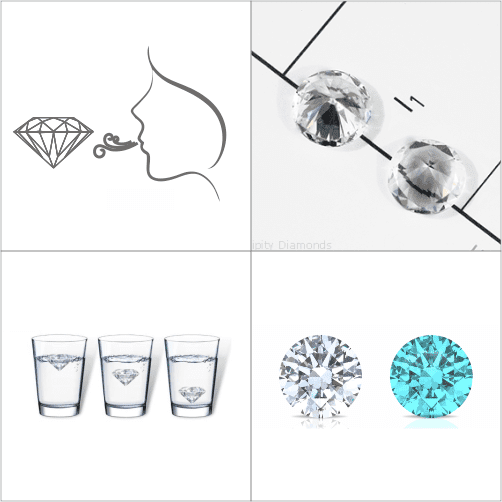
In 2022, the jewellery magnet Kay Jewellers faced a backlash after a TikToker posted a TikTok showing how she went to sell her promise ring to Kay from where she originally bought it and came to know that it was Fake! Can you imagine being in that situation? If you want, you can red the article here.
This is a classic example of the Switcheroo Scam. In this scam, the actual diamond is swapped for a fake stone that closely resembles the real stone.
In the case of the above fiasco, the woman was later approached by a jeweller from Kay and they rectified their mistake and offered her the genuine value of her stone.
To avoid this kind of scam, for any services, approach the place from where you bought the piece in the first place. Thus, choosing a reputed company that has positive reviews and excellent customer service in the first place is important.
Next up, investing in a diamond certificate is important. It allows you to check the diamond and correlate its features with what’s given in the certificate before and after the service.
Also, most certified diamonds these days have a laser inscription of their certificate number on the girdle. Your jeweller must read and verify the number with you during pickup as well as while delivering. In case, your diamond doesn’t have a laser inscription, there are other ways through which a jeweller can verify the authenticity of your diamond.
In fact, there are certain ways through which you as a buyer can also check whether a diamond is authentic or not. But it’s advisable to consult an experienced gemologist before reaching a conclusion.
- Fog Test: Hold the diamond in front of your mouth and simply fog it as you would do to a mirror. If it fogs for a couple of seconds, chances are it is not a real diamond as authentic diamonds do not fog.
- Reflection Method: Look straight into the diamond from the top. If it emits a rainbow–like reflection, perhaps it is either a fake stone or a low-quality diamond.
- Drop it in a glass of water. In case it is a loose diamond, try dropping it in a glass full of water. If it settles down, it is real. If it floats on the water, it might be some other stone.
- Another way to check the authenticity of your diamond is by placing it under UV light. Many diamonds react when they’re put under UV light. If it turns blue, it is a positive sign. If not, it might be some different stone. But, remember, not all diamonds react with UV light and that doesn’t make them fake or less authentic.
2. Altered Diamond Certificate
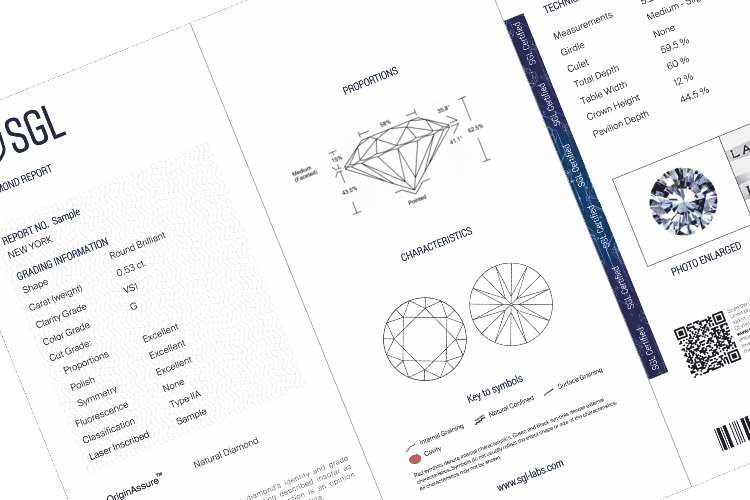
An informed buyer understands the importance of a diamond certificate and asks for the same before purchasing a piece. But, these days some fraud jewellers even fake a diamond certificate.
To avoid this scam, ask for a grading report from a reputed lab. Since labs are independent third-party organisations that assess the quality of diamonds, their reports are usually authentic.
Next, whichever lab you choose, check their standardised template online or by contacting them. While assessing their standard template for reports, check for the security features inscribed in the same. Once done, compare it with the report your jewellery is offering. If you find that the certificate is tampered with or lacks certain security features, step away from the purchase.
In fact, you can even alert the grading lab about the concerned jeweller and how they’re destroying the lab’s name in the market. Gemological labs will take note of your report and take legal action against the jeweller.
Also, some jewellers offer certificates from generic labs which might have tie-ups with them. It’s important to have a diamond certificate from a reputable lab to ensure your piece’s authenticity. Read our blog on diamond buying guide to help you understand it in detail.
3. The Clarity Enhancement Scam
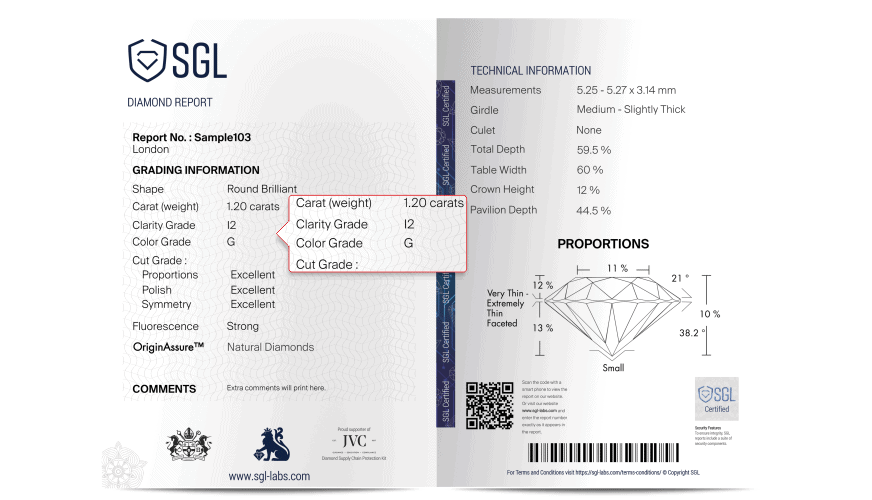
Natural Diamonds are usually flawed. In fact, the most flawless diamond is not only rarest of rare but also extremely expensive.
A technique called fracture filling is used to improve the clarity of diamonds. Since this enhances the overall appeal of the diamond and makes it more flawless, it helps sellers to boost the stone’s price.
However, in reality, these fracture-filled diamonds are still flawed and easily breakable. The process might enhance the look of diamonds but make them less valuable and more prone to breaking.
Also, fracture-filled diamonds are difficult to trace. In fact, even certain labs do not disclose the same on the certificate. If they do so, they might plainly state that the diamond in question has been enhanced in so and so fashion.
To avoid this scam, you may ask your jeweller for a written statement stating if any colour or clarity enhancement process has been done on the diamond. At the same time, ask for a report from genuine and reputable grading laboratories.
4. The Carat Total Weight Scam
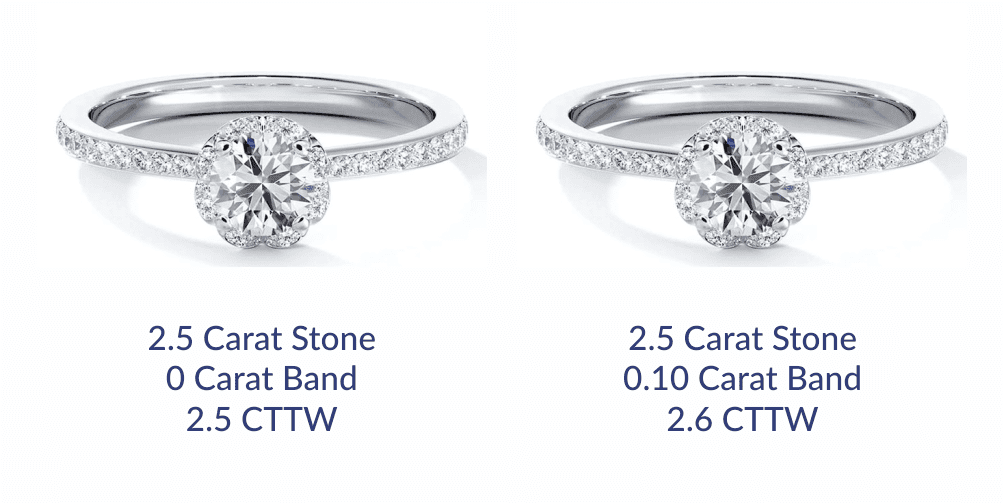
The carat total weight scam is definitely the most common of all. It can burn a hole in an uninformed buyer’s pocket.
Usually, what happens is that a buyer considers the carat weight written on the price tag as final. However, the carat weight marked on those tags is the total weight of all the diamonds in that piece and not of individual diamonds.
If you are unaware of the quality and weight of the centre stone of your piece, you can’t compare prices accurately. This way, you might end up paying more as one large stone costs more than a bunch of smaller stones.
For instance, if a one-carat diamond costs around $5000, a bunch of diamonds of the same quality weighing in total as one carat will cost only $1500. Although the prices here are hypothetical, the difference can be seen in reality as well.
5. Wholesale-Retail Pricing

Have you ever seen “50-75% off” signs on jewellery stores or websites? You probably might have. As enticing as they may look, they’re a shrewd marketing technique to attract customers and make sales by tricking them into believing that they are getting a steal deal.
Here’s the trick. Most jewellery stores mark up the price of diamonds by 200-300% from the original price on their price tags. Yes, they may keep any astonishing figure on their price tag and nobody would question it.
Later they may play gimmicky marketing tricks with customers by slashing the cooked-up price and replacing it with a more believable one. This new price will still be way more than the original price of diamonds. But, given their technique, many customers get compelled to buy the piece before the “limited period offer” ends.
It is important for buyers to verify the value of the diamond from the market before they aim to purchase it. This can be done by consulting a gemologist or using online tools. Also, make sure you get a grading report from trust gemological lab such as SGL Labs which provide a detailed report that mentions about diamond treatment. Now that you are educated make sure you or your loved ones don’t fall for these diamond scams.

